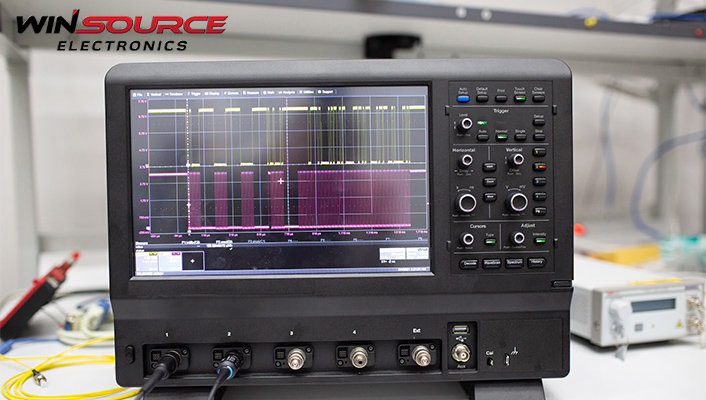
Do you know that oscilloscopes play a crucial role in electrical engineering, electronics, and various scientific fields? An electronic problem can be diagnosed and troubleshooted using the signal analyzer. It helps to get a deeper understanding of electrical circuit behavior.
WIN SOURCE manufactures quality electronic components for smart devices like oscilloscopes. You’ll find everything from resistors to ICS for your business.
In order for sensitive devices like oscilloscopes to work well, you need high quality components. If you don’t know about the device, keep on reading.
Table of Contents
ToggleWhat is an Oscilloscope?
An oscilloscope, often referred to as an “oscope,”. It is a test instrument that visually displays electrical waveforms. Which allows users to visualize the behavior of signals over time.
It provides a graphical representation of voltage against time on its screen. It enables professionals to analyze various aspects of the waveform, such as
● Amplitude
● Frequency
● Phase, and distortion
Oscilloscopes come in both analog and digital forms, with the latter being more prevalent due to their enhanced features and capabilities.
How to Use an Oscilloscope?
Connect the Probe: Attach the probe to the channel input of the oscilloscope. The probe captures the signal you want to analyze.
Adjust Time and Voltage Scales: Set the appropriate time and voltage scales to ensure the waveform is clearly visible on the screen.
Triggering: Set the trigger mode and level to stabilize the waveform display, helping you capture repetitive signals accurately.
Analyze the Waveform: Examine the waveform on the screen. Measure attributes like amplitude, frequency, rise/fall times, and phase shift using the on-screen measurement tools.
Advanced Analysis: Many modern oscilloscopes offer advanced analysis features like FFT (Fast Fourier Transform) for frequency domain analysis and waveform math functions.
Choosing the Right Oscilloscope
Bandwidth: Select the device comes with a bandwidth greater than the highest frequency component of your signals.
Sampling Rate: Higher sampling rates allow capturing fast-changing signals accurately. Consider the Nyquist theorem when selecting the sampling rate.
Channels: Determine how many signals you need to analyze simultaneously. Oscilloscopes can have multiple channels for multi-signal analysis.
Memory Depth: Larger memory depth is essential for capturing longer signal durations and maintaining signal fidelity.
Probe Compatibility: Ensure the oscilloscope and probes you choose are compatible and offer accurate signal capture.
Display and User Interface: An intuitive user interface and a clear display are crucial for efficient analysis.
Triggering Options: Look for advanced triggering options like edge, pulse, video, and serial protocol triggering to capture specific events accurately.
Price and Budget: Consider your budget and prioritize features that align with your requirements.
Key takeaway:
Oscilloscopes are indispensable tools. Engineers and technicians can harness the power of this instrument to enhance their work. It will help to streamline debugging processes, and ensure the reliability of electronic systems
It is essential to use quality electronic components, regardless of whether you are an electronics enthusiast or a professional. You can order electronic components from different reliable manufactures from WIN SOURCE. Our certified company offers customer support, easy ordering process and quick shipping!

COMMENTS